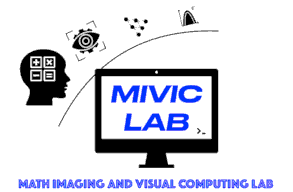| Title | Spatially localized sparse approximations of deep features for breast mass characterization |
| Publication Type | Journal Article |
| Year of Publication | 2023 |
| Authors | Harris, C, Okorie, U, Makrogiannis, S |
| Journal | Mathematical Biosciences and Engineering |
| Volume | 20 |
| Pagination | 15859-15882 |
| ISSN | 1551-0018 |
| Keywords | breast mass classification, convolutional neural network, deep features, mammography, patch decomposition and reconstruction, sparse approximation |
| Abstract | We propose a deep feature-based sparse approximation classification technique for classification of breast masses into benign and malignant categories in film screen mammographs. This is a significant application as breast cancer is a leading cause of death in the modern world and improvements in diagnosis may help to decrease rates of mortality for large populations. While deep learning techniques have produced remarkable results in the field of computer-aided diagnosis of breast cancer, there are several aspects of this field that remain under-studied. In this work, we investigate the applicability of deep-feature-generated dictionaries to sparse approximation-based classification. To this end we construct dictionaries from deep features and compute sparse approximations of Regions Of Interest (ROIs) of breast masses for classification. Furthermore, we propose block and patch decomposition methods to construct overcomplete dictionaries suitable for sparse coding. The effectiveness of our deep feature spatially localized ensemble sparse analysis (DF-SLESA) technique is evaluated on a merged dataset of mass ROIs from the CBIS-DDSM and MIAS datasets. Experimental results indicate that dictionaries of deep features yield more discriminative sparse approximations of mass characteristics than dictionaries of imaging patterns and dictionaries learned by unsupervised machine learning techniques such as K-SVD. Of note is that the proposed block and patch decomposition strategies may help to simplify the sparse coding problem and to find tractable solutions. The proposed technique achieves competitive performances with state-of-the-art techniques for benign/malignant breast mass classification, using 10-fold cross-validation in merged datasets of film screen mammograms. |
| URL | https://www.aimspress.com/article/doi/10.3934/mbe.2023706 |
| DOI | 10.3934/mbe.2023706 |
Spatially localized sparse approximations of deep features for breast mass characterization
Submitted by admin on Mon, 08/28/2023 - 15:47
